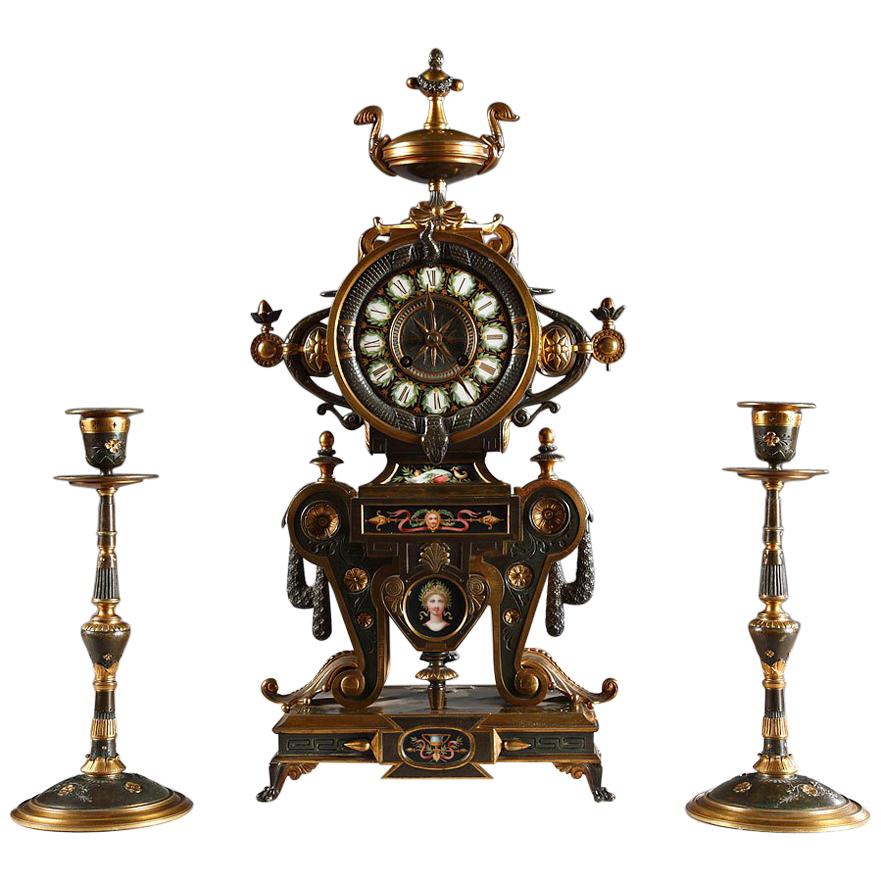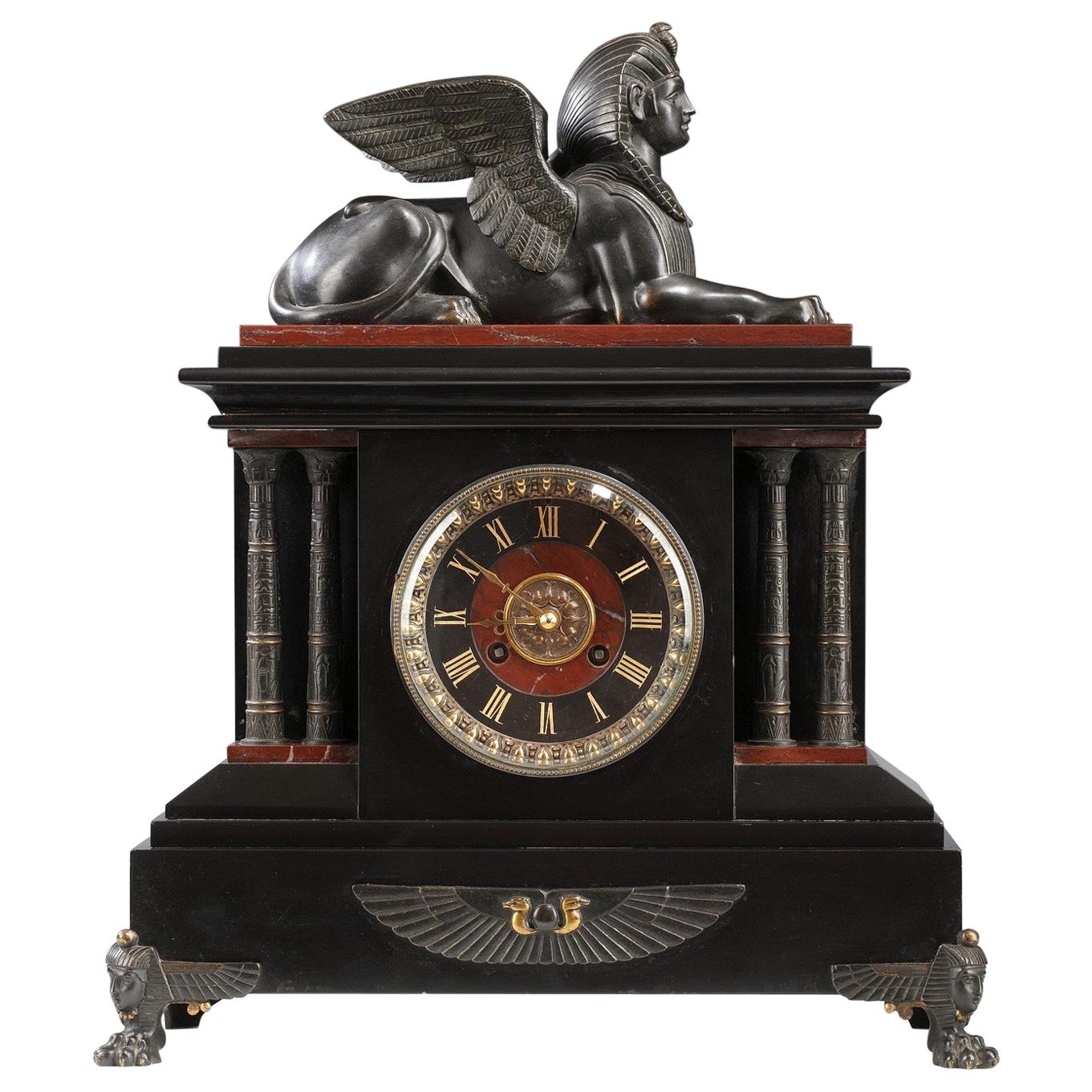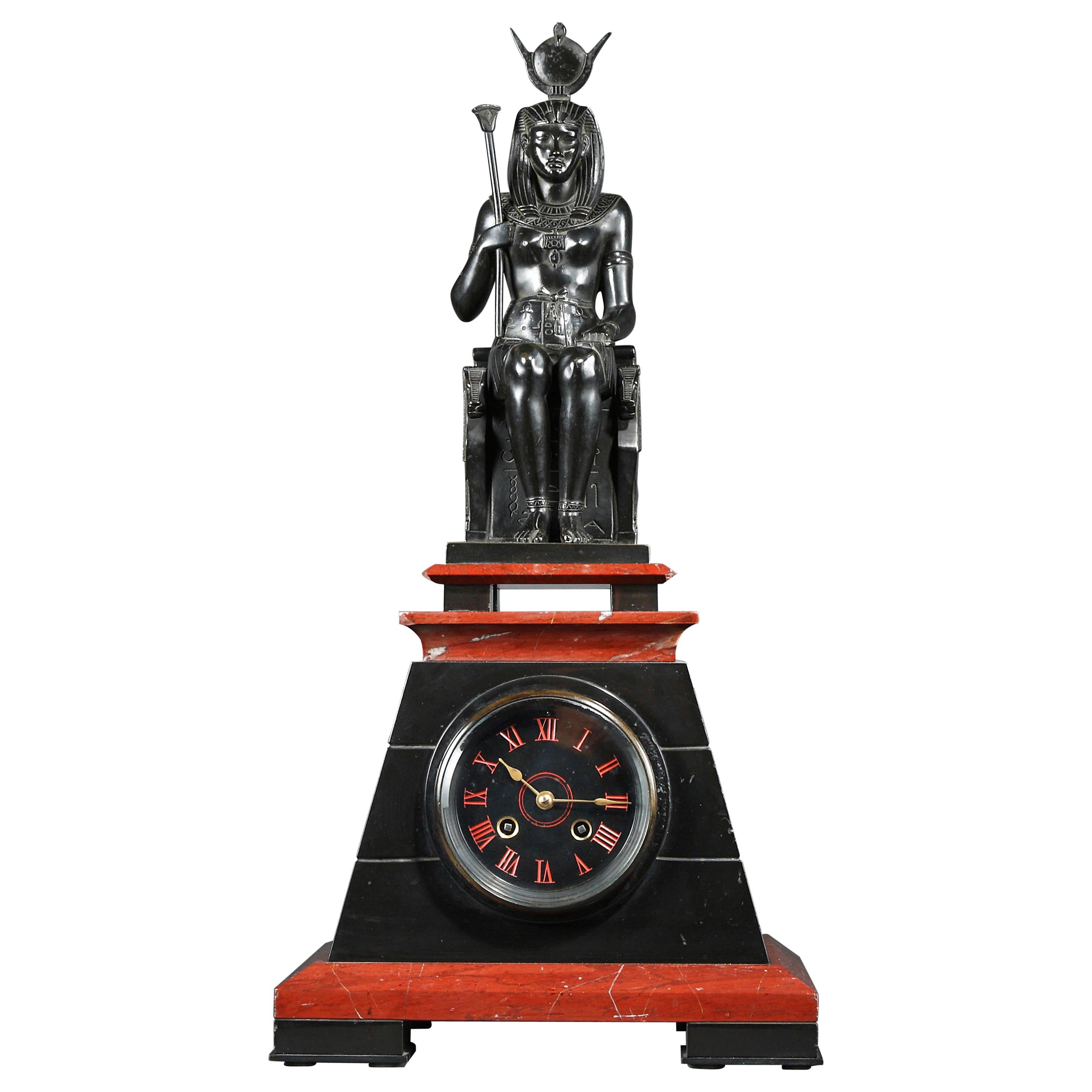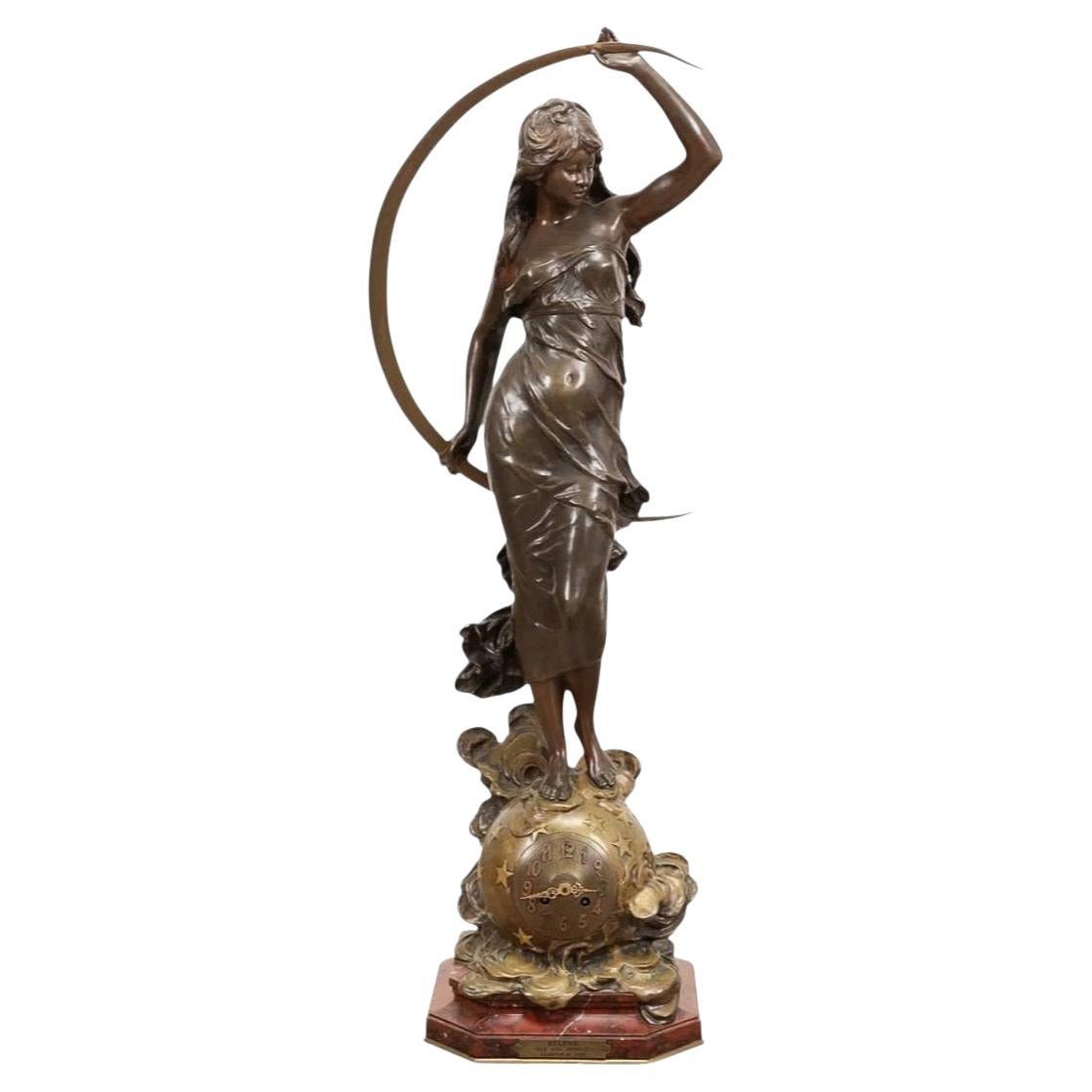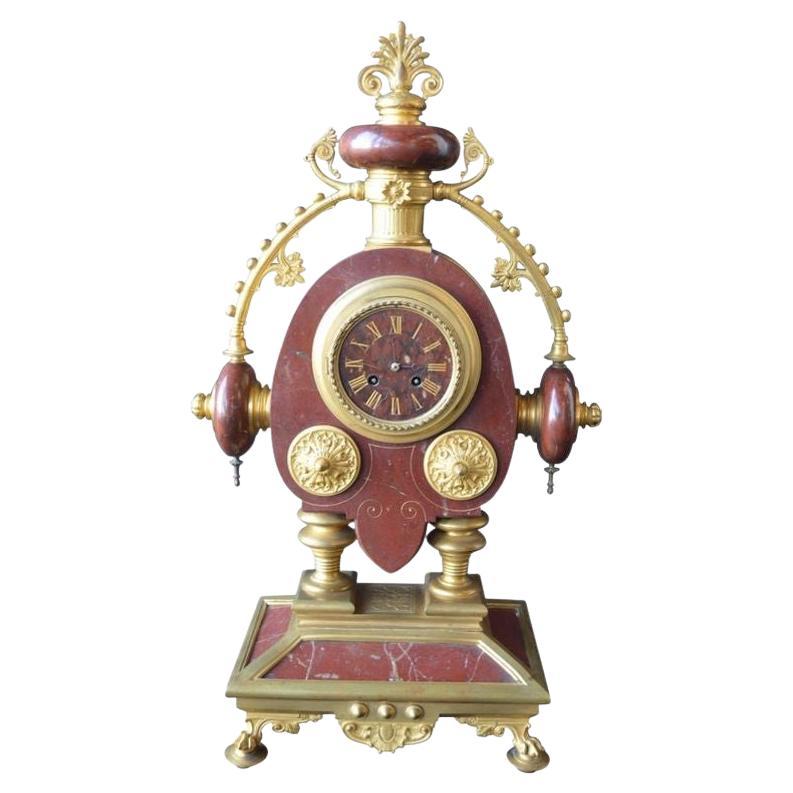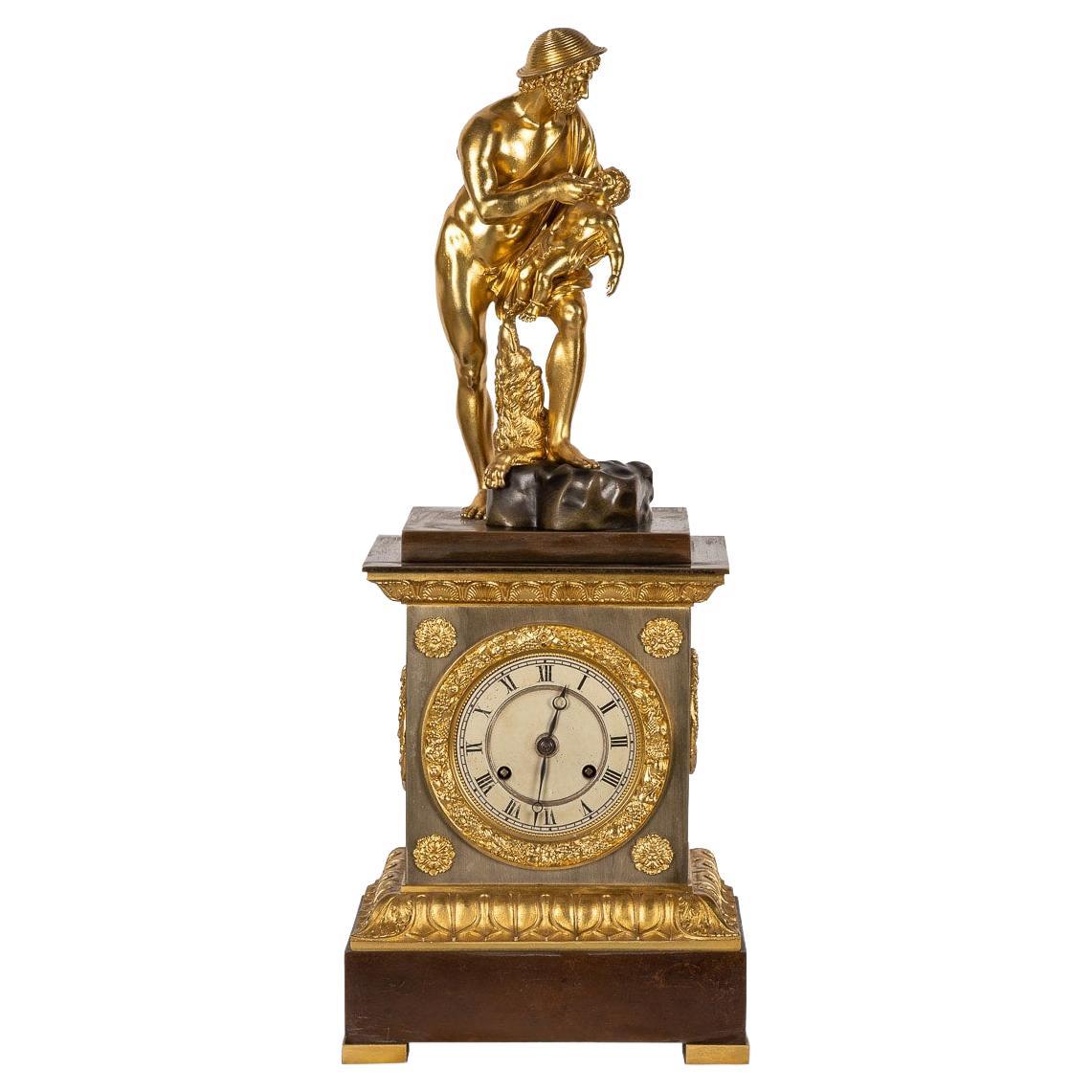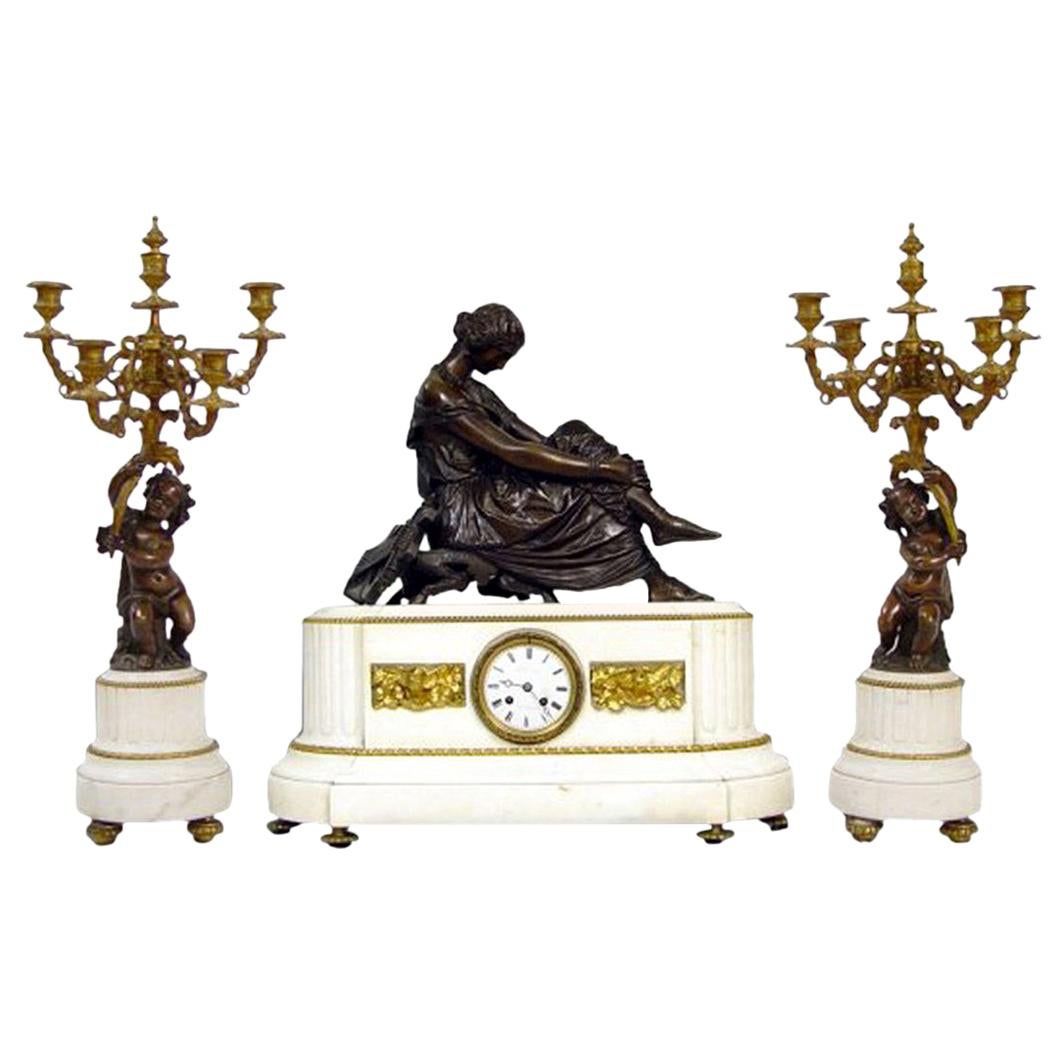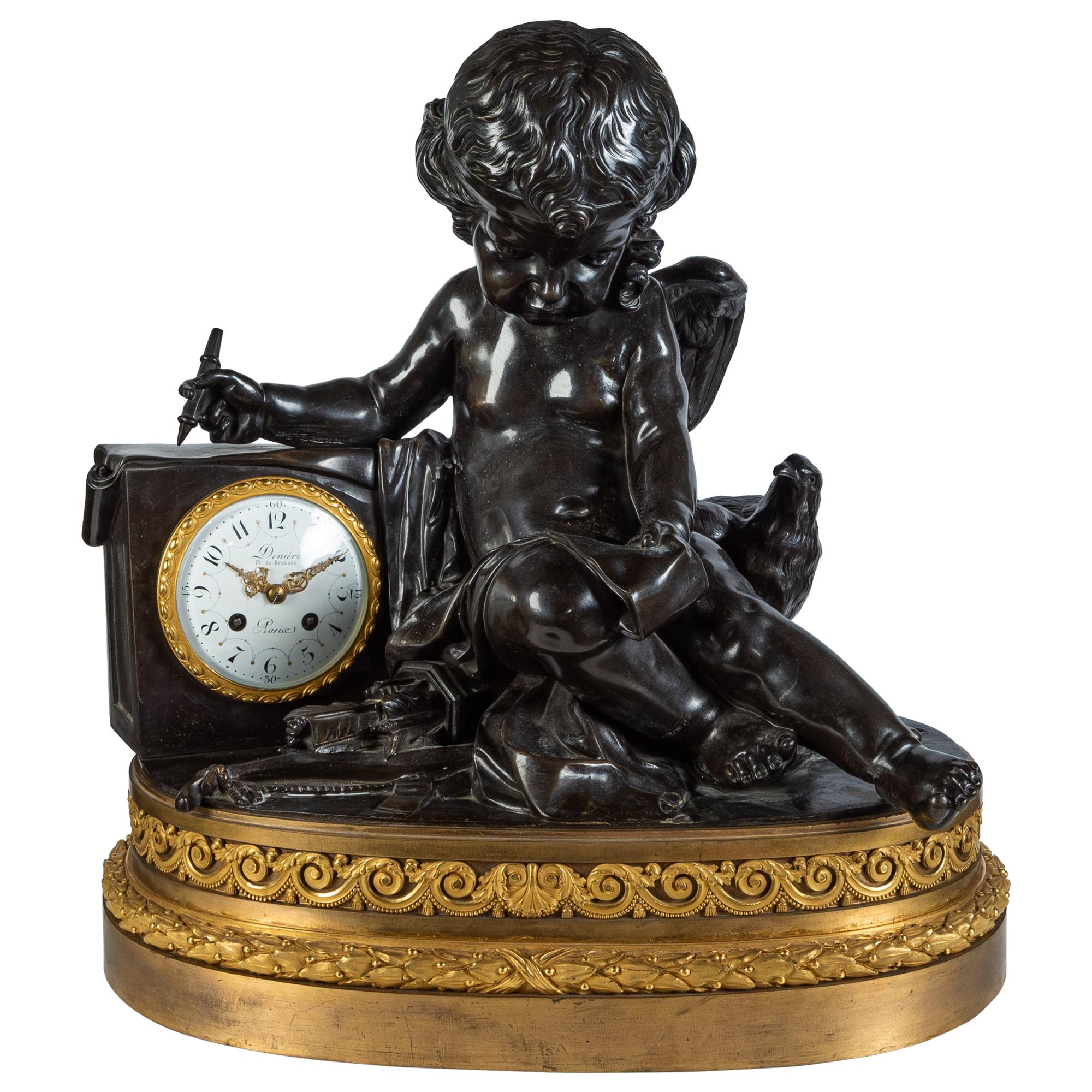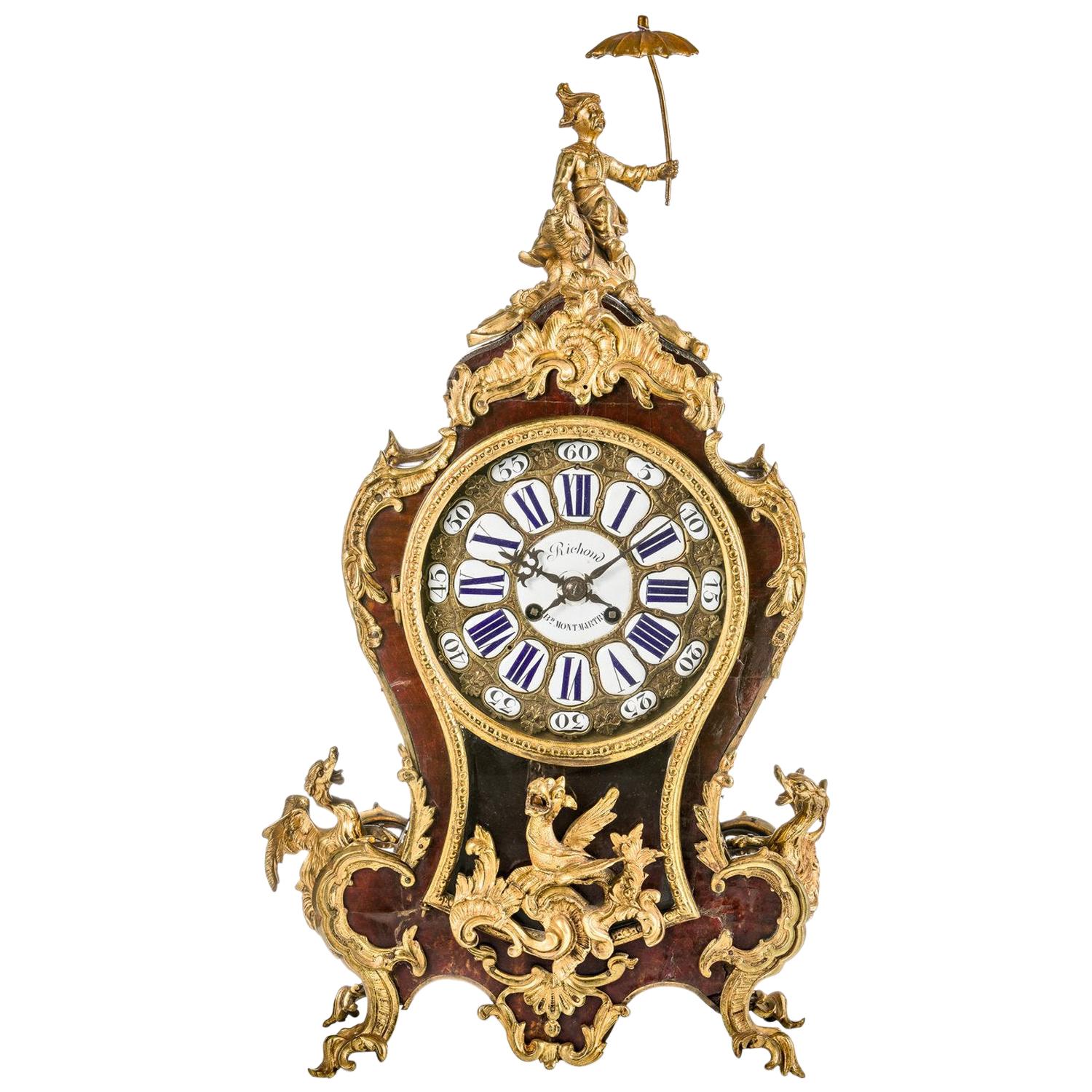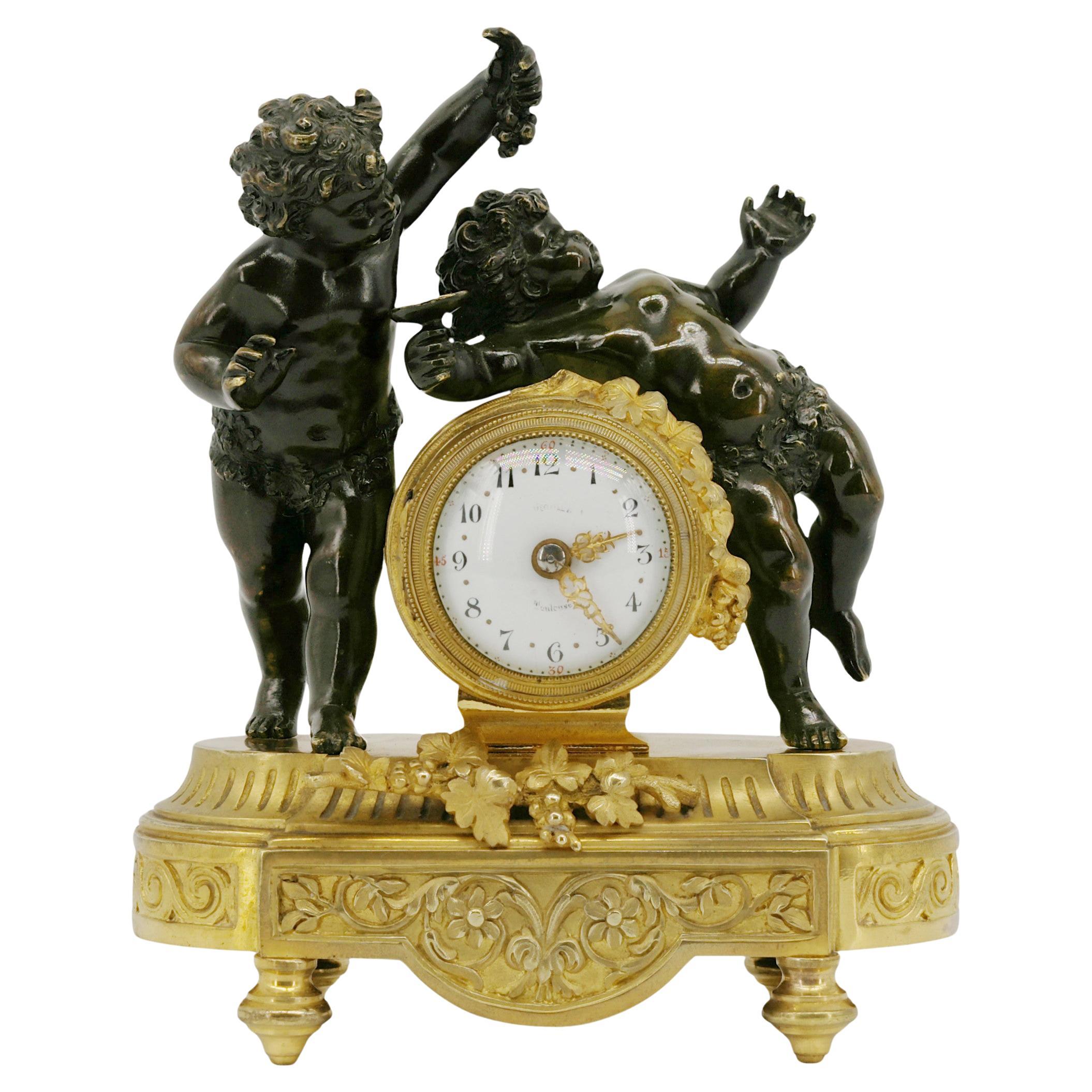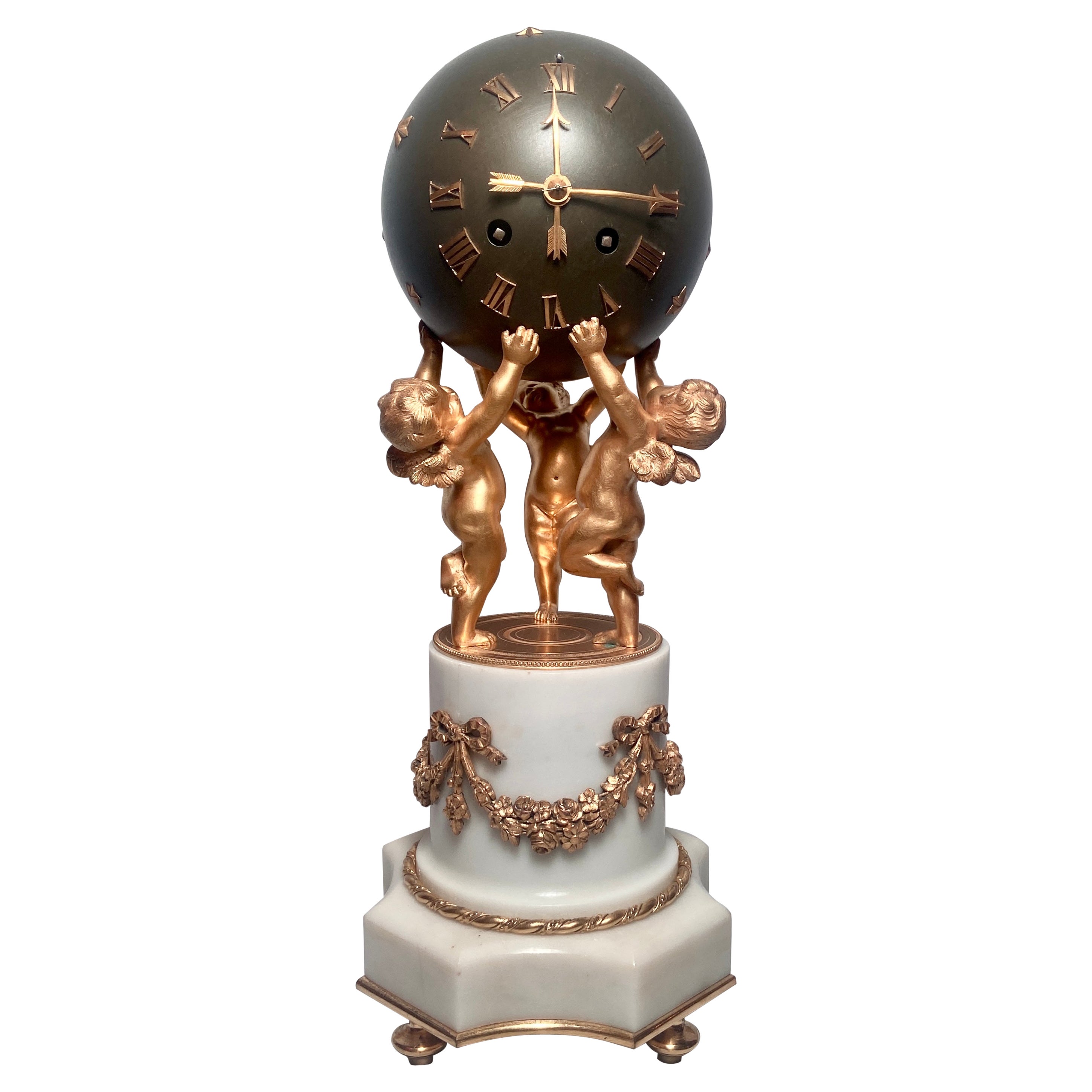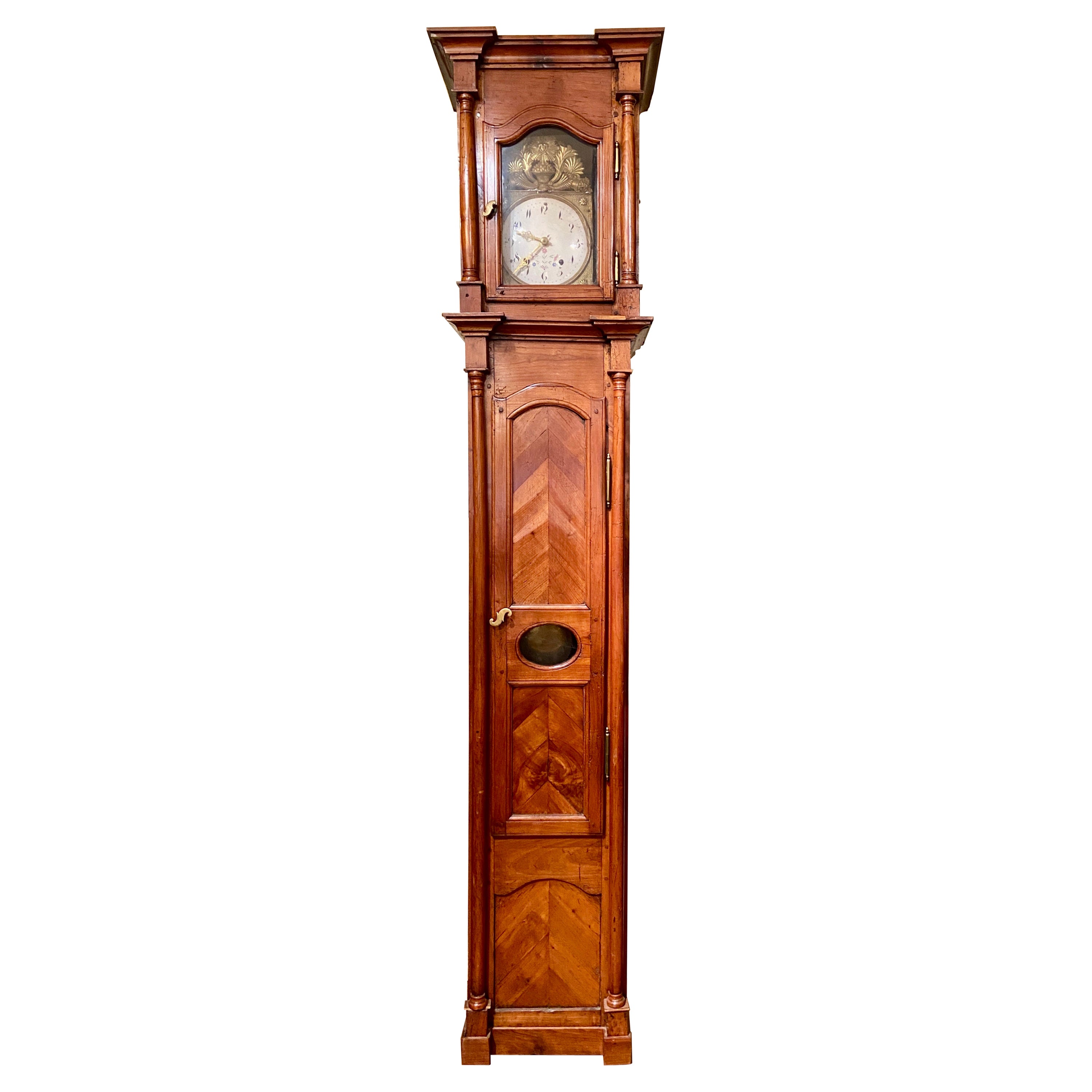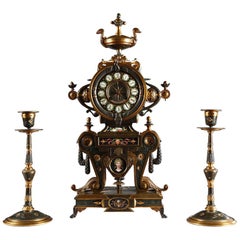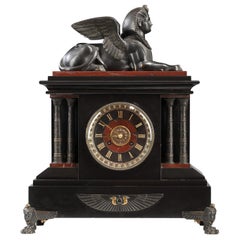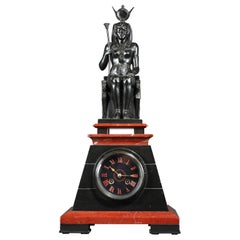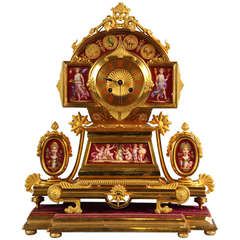
H. Houdebine - A French Neo-Greek Bronze Clock, Circa 1870
View Similar Items
1 of 7
H. Houdebine - A French Neo-Greek Bronze Clock, Circa 1870
$16,144.63List Price
About the Item
- Creator:Henri Houdebine (Maker)
- Dimensions:Height: 16.15 in (41 cm)Width: 13.39 in (34 cm)Depth: 6.3 in (16 cm)
- Style:Greek Revival (In the Style Of)
- Materials and Techniques:
- Place of Origin:
- Period:
- Date of Manufacture:Circa 1870
- Condition:
- Seller Location:Paris, FR
- Reference Number:Seller: ref. 1608/51stDibs: LU104781181278
Authenticity Guarantee
In the unlikely event there’s an issue with an item’s authenticity, contact us within 1 year for a full refund. DetailsMoney-Back Guarantee
If your item is not as described, is damaged in transit, or does not arrive, contact us within 7 days for a full refund. Details24-Hour Cancellation
You have a 24-hour grace period in which to reconsider your purchase, with no questions asked.Vetted Professional Sellers
Our world-class sellers must adhere to strict standards for service and quality, maintaining the integrity of our listings.Price-Match Guarantee
If you find that a seller listed the same item for a lower price elsewhere, we’ll match it.Trusted Global Delivery
Our best-in-class carrier network provides specialized shipping options worldwide, including custom delivery.You May Also Like
Fine Neo-Greek Clock Set by H. Houdebine, France, Circa 1867
By Henri Houdebine
Located in PARIS, FR
Dial signed H. Houdebine, Fabricant de Bronzes, Rue de Turenne 64, Paris
and clockwork signed Japy Frères & Cie – Médaille d’Honneur
A very fine neo-Greek style clock set made up of...
Category
Antique 1860s French Greek Revival Table Clocks and Desk Clocks
Materials
Bronze
$10,523 Sale Price / set
29% Off
Neo-Egyptian Bronze and Marble Clock Attributed to G.Servant, France, Circa 1870
By Georges Emile Henri Servant
Located in PARIS, FR
A black and red marble clock in the shape of an Egyptian temple attributed to G. Servant, flanked by double columns inscribed with hieroglyphs and ornated with a winged uraeus, all made in two patina bronze. The clock is surmounted by a patinated bronze sphinx. Resting on four bronze faces wearing the nemes and terminating in lion paw feet.
Georges Emile Henri Servant (circa 1828-1890) who took over his father in 1855 at their foundry, rue Vieille-du-Temple, in Paris, specialized in the production of neo-Egyptian style clocks, very popular in France since 1860s, and also the making of Greek style decorative objects. He drew considerable attention to the high quality of his bronzes at the 1855 Paris Universal Exhibition and then at the 1862 London Exhibition. At this time Servant exported up to 40% of his production, principally to the United States, where for instance, his sphinx clocks were sold with great success by Louis Tiffany Inc. or Hamann & Roche of New York (A similar clock is now exposed at the Metropolitan Museum of Art, New York). But his success came really at the 1867 Paris Universal Exhibition, where he was awarded a gold medal for his neo-Greek and Egyptian works (Les Merveilles...
Category
Antique 1870s French Egyptian Revival Mantel Clocks
Materials
Marble, Bronze
Neo-Egyptian Marble Clock Attributed to G. Servant, France, Circa 1870
By Georges Emile Henri Servant
Located in PARIS, FR
Black and red marble pyramid shaped Egyptian style clock attributed to G. Servant, surmounted by a patinated bronze figure representing the Egyptian goddess Isis sitting on her throne. Wearing the Hathor hairdress (the solar disc surrounded by the sacred cow horns), she holds in her right hand the Ouadj, the goddesses scepter surmounted by a canopy of papyrus, symbolizing health and eternal youth and in her left hand, the cross of life Ankh, symbol of rebirth and eternity.
That Egyptian style in fashion since Napoleon the First and his military campaigns in Egypt around 1799 was rediscovered in France in the 1830's and above all in the 1860's. Some renowned French artists, such the sculptors and bronze-casters Guillaume Denière (1815-1903), Emile Hébert (1828-1893) et Georges Servant (1828-1890), presented at the 1867 and 1878 Paris Universal Exhibitions, an a-part section dedicated to their Egyptian style production. Their shows drew then considerable attention from the public and the wealthy collectors. During the 1867 Universal Exhibition, one could admire the Stand realized by the French silversmith-jeweller Gustave Baugrand (1826-1870), where his works executed in most Fine materials took inspiration from the Egyptian Antiques, exhibited then in the Louvre museum.
Georges Emile Henri Servant (1828-c.1890), who took over his father in 1855 at their foundry, rue Vieille-du-Temple, in Paris, specialized in the production of neo-Egyptian style clocks, very popular in France since 1860’s, and also the making of Greek style decorative objects. He drew considerable attention to the high quality of his bronzes at the 1855 Paris Universal Exhibition and then at the 1862 London Exhibition. At this time Servant exported up to 40% of his production, principally to the United States, where for instance, his clocks were sold with great success by Louis Tiffany Inc. or Hamann & Roche of New York. But his success came really at the 1867 Paris Universal Exhibition, where he was awarded a gold medal for his neo-Greek and Egyptian works (Les Merveilles...
Category
Antique 1870s French Egyptian Revival Table Clocks and Desk Clocks
Materials
Marble, Bronze
Large French Figurative Greek Revival Bronze Clock by Auguste Moreau
By Auguste Moreau
Located in New York, NY
Large antique (late 19th century) French figurative clock from the Greek Revival period depicting the goddess, Selene, after the original sculpture by Auguste Moreau (French, 1834-19...
Category
Antique Late 19th Century French Greek Revival Mantel Clocks
Materials
Bronze
Large French Neo-Grec Revival Gilt Bronze & Marble Mantel Clock, c. 1870.
Located in Los Angeles, CA
A striking and unusual French Neo-Grec Revival mantel clock, circa 1870, featuring a richly veined rouge griotte marble case adorned with gilt bronze mounts. The arched body is cente...
Category
Antique 19th Century French Mantel Clocks
Materials
Bronze
19th Century French Empire Style Bronze Mantel Clock, circa 1870
Located in Royal Tunbridge Wells, Kent
Antique 19th century French Empire style gilt bronze mantle clock. The foliate and fruit engraved gilt-brass dial with enamel painted roman numerals. Inside with eight day movement w...
Category
Antique 19th Century French Empire Mantel Clocks
Materials
Brass, Bronze, Enamel
Recently Viewed
View AllMore Ways To Browse
Porcelain Clocks With Cherubs
Acorn Sculpture
Japy Freres Antique Clocks
Red Lion Furniture Company
Greek Muse Sculpture
Antique Porcelain Casters
Pompeian Bronze
Pompeian Style
Acorn Clocks
Revival Chicago
Clock Napoleon 3
Greek Theater Mask
Astrological Clock
French Ormolu
Bells
Antique French Enamel
Gilt Bronze Ormolu
Roman Style Furniture
